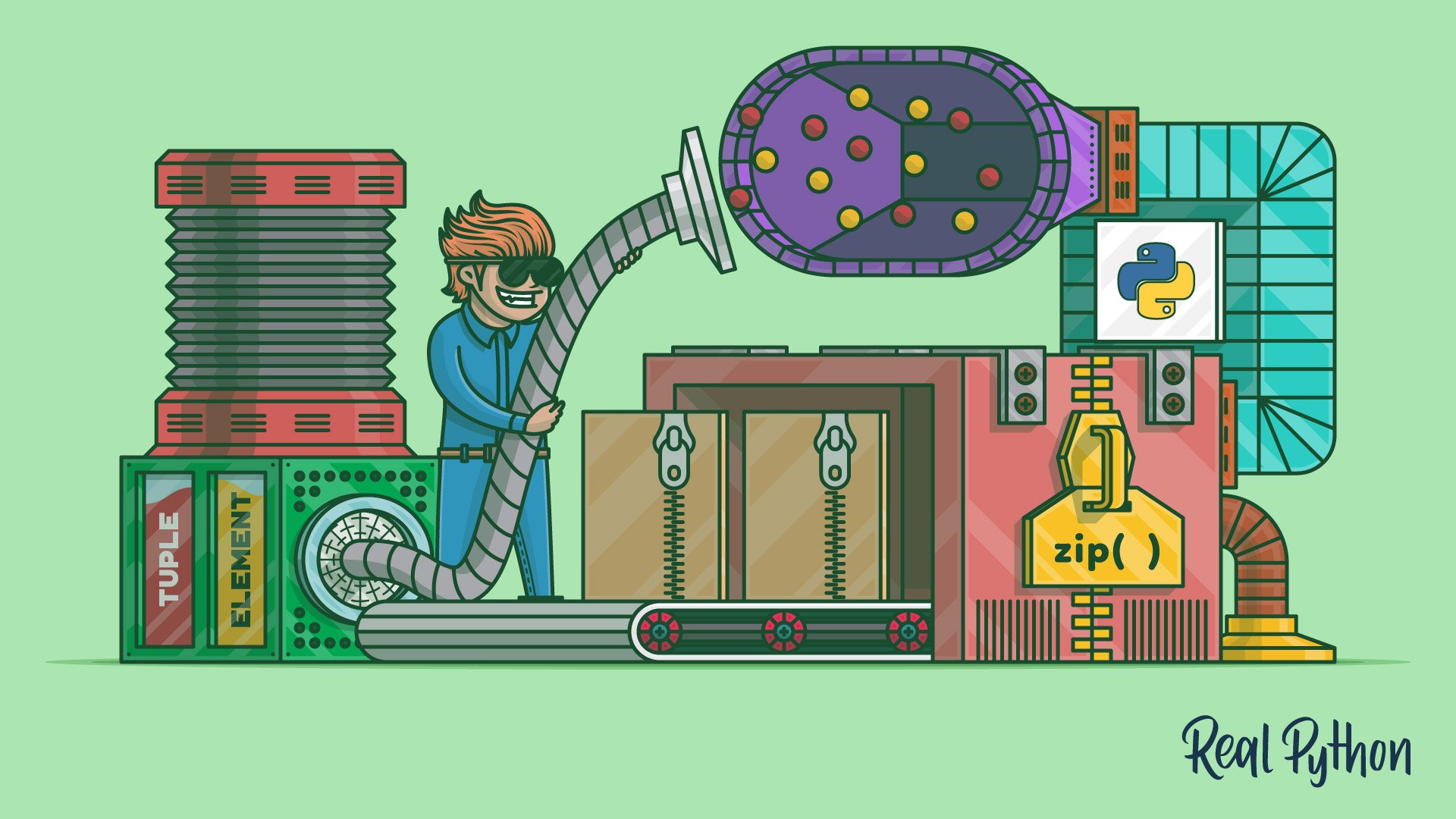Python’s zip() function creates an iterator that will aggregate elements from two or more iterables. You can use the resulting iterator to quickly and consistently solve common programming problems, like creating dictionaries. In this course, you’ll discover the logic behind the Python zip() function and how you can use it to solve real-world problems.
By the end of this course, you’ll learn:
- How
zip()works in both Python 3 and Python 2 - How to use the Python
zip()function for parallel iteration - How to create dictionaries on the fly using
zip()
What’s Included:
- 6 Lessons
- Video Subtitles and Full Transcripts
- 2 Downloadable Resources
- Accompanying Text-Based Tutorial
- Q&A With Python Experts: Ask a Question
- Certificate of Completion
Downloadable Resources:









